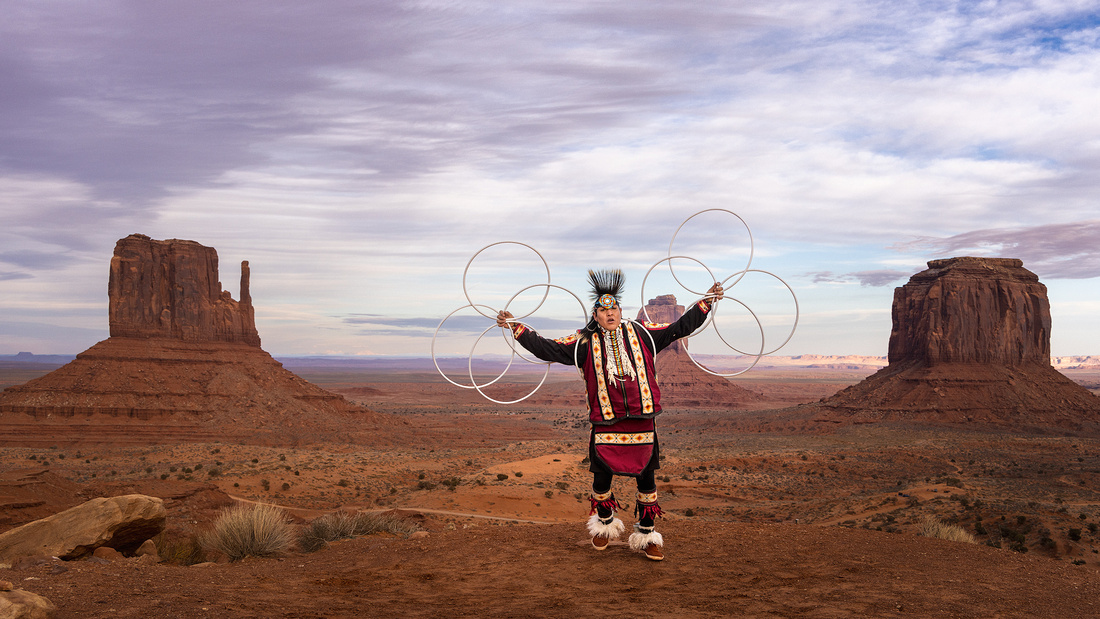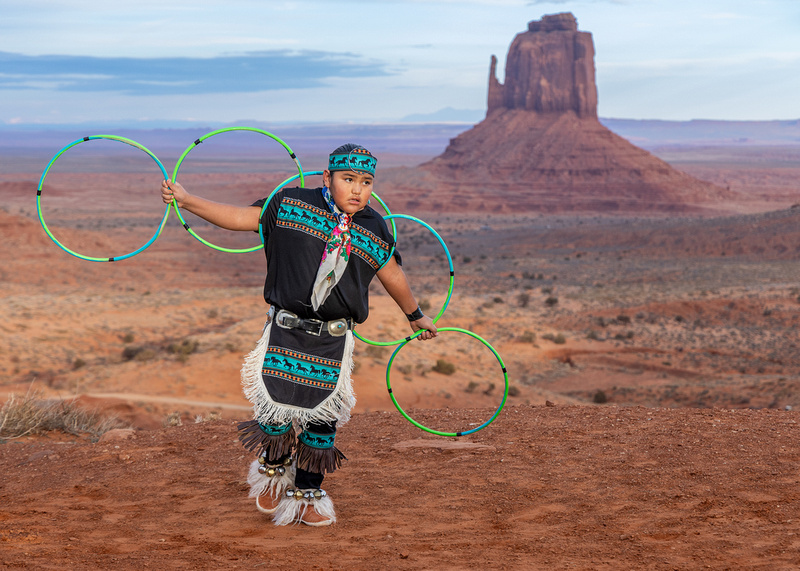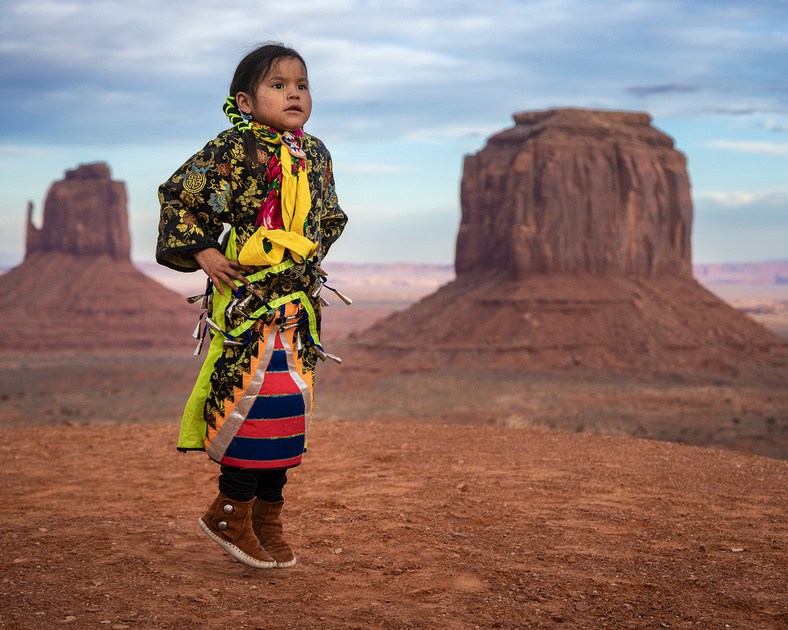Hoop Dancing


Westin mesmerized his audience. It takes a lot for photographers to put down their cameras, but we stopped frequently to simply admire his mastery of the hoops.
Without written language, Westin’s Diné (Navajo) ancestors passed on their traditions through storytelling, songs, and dancing. Hoop dancing incorporates all three. One, a handful, or up to dozens of hoops make it distinctive.
The dance is usually performed by a solo dancer who begins with a single hoop. This is symbolic of the circle of life. Then additional hoops are added that seemingly interlock and extend from the body creating static and dynamic shapes, poses, and moves.
The hoops represent the wind, water, earth, the seasons, and all living things. All the while, the dancer is maintaining his balance and moving to the rhythm of traditional indigenous music. Every dance is as individual as the person who choreographs it.
Because of its complexity, hoop dancing takes years of practice to master.
Origins
Hoop dancing dates back centuries to many tribes, each of whom claims to have created it. In the 1930s, a young man named Tony White Cloud created today’s modern hoop dance. He used 24-inch diameter hoops that he could get his body through.
He popularized the dance in the United States, performing in the 1942 movie Valley of the Sun. In addition, he traveled with Gene Autry across the U.S. and Europe promoting war bonds by performing the hoop dance. He also danced in Autry’s 1952 movie, Apache Country.
A Family Tradition
Westin is passing on the tradition to his young son and daughter.




The Shot
Last December, I was at a photography workshop in Monument Valley. Along with our usual landscape photography, several environmental portrait sessions with members of the Diné community were included in the itinerary.
I was fascinated by the athleticism of Westin and his family. And our entire group was captivated by this glimpse into the world of the Diné nation.
After taking hundreds of photographs, these three appealed to me the most.
Thanks for looking,
Chuck Derus